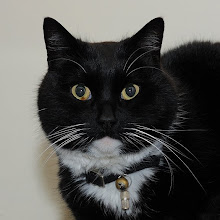Over the past years I was frequently asked by fellow researchers of the British Army's history how a Dutch guy became involved into this area of research. The origin dates back till my time at secondary school, when I was around 14-15 years of age.
Even before that time I had developed a strong interest into history, and when I grew older the second world war became a special area of interest. In particular I took an interest in the fightings that took place in the Netherlands in 1944 - 1945.
While reading about the events, I noticed that the regiments of the British (and Canadian) Army were not denoted by numbers (like in the US and German Armies), but by names. So I became intrigued by names like "The Argyll and Sutherland Highlanders", and "The Buffs", and "The Royal Welch Fusiliers". Not to forget the names of the Canadian regiments that took part in the liberation of course!
As such, I started to compile orders of battle and gradually I expanded from Western Europa towards North Africa and the Far East campaigns as well. However, apart from writing down names and numbers I still wan not aware of the many hidden characteristics of the regiments.
This changed in early 1996, if I am not mistaken, when I found Todd Mills' website on the then much smaller internet. As soon as I started to discuss with him about the British Army I became aware of these hidden features. Initially I thought there was just one army. How wrong could I have been....
There was the regular army, dating from 1661. The regular battalions of infantry regiments where mostly numbers 1st and 2nd. However, some used to have also a 3rd and 4th. Then I learned about the Territorial Army, with battalions numbered 4th, 5th etc, and dating from 1859. Also about war-formed battalions, duplicate battalions. About battalions of militia/special reserve (numbered 3rd) that had ceased to exist effectively before the Second World War.
So I had to learn a lot, and I learned it the fast and the hard way. The restriction I initially had was that I focussed on the period 1939 - 1945 only. But that was to change during the past 10 years.
I learned about the Cardwell reforms, the Haldane reformed, the creation of the TAVR in 1967, Options for Change, the Strategic Defence Review. But also about the reorganistion of the miltia back in the 1750s, the Irish Yeomanry (that consisted of infantry as well!) of 1796 - 1830s, the Supplementary Militia of 1798, and many more.
And somewhere between 1996 and 2007 the idea to write a book about took form. About the initial ideas, the reasons for writing a book (yet another on the British Army) will be next!
Thursday, 26 July 2007
Subscribe to:
Post Comments (Atom)




No comments:
Post a Comment